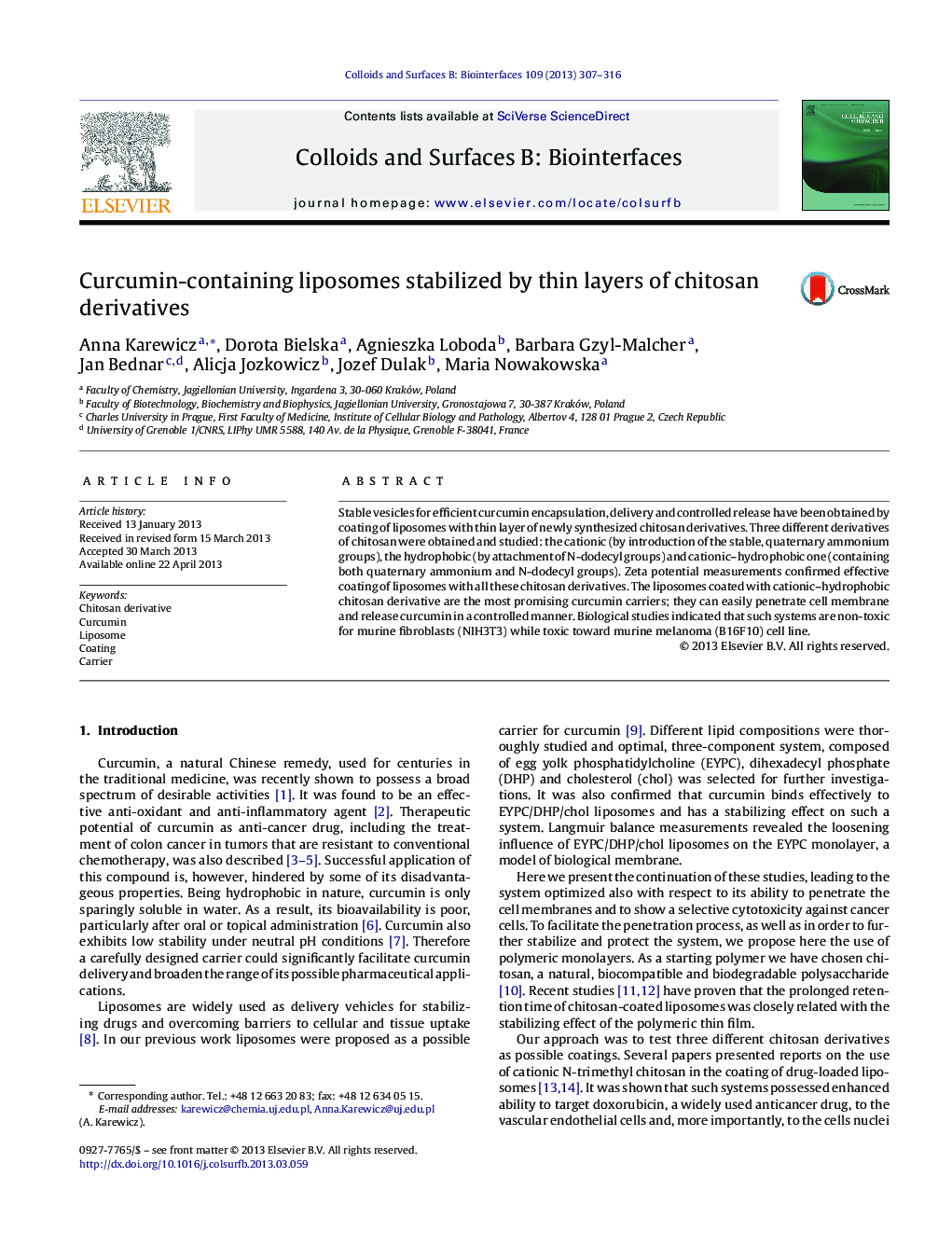| Article ID | Journal | Published Year | Pages | File Type |
|---|---|---|---|---|
| 600112 | Colloids and Surfaces B: Biointerfaces | 2013 | 10 Pages |
•Cationic, hydrophobic and cationic–hydrophobic derivatives of chitosan were obtained and characterized.•Curcumin-containing liposomes were successfully stabilized by effective coating with these derivatives.•Liposomes coated with cationic–hydrophobic chitosan are most promising for curcumin delivery.•Such coated liposomes easily penetrate cell membrane and release curcumin in a controlled manner.•These curcumin-loaded liposomal systems are non-toxic for normal cells, but toxic for murine melanoma.
Stable vesicles for efficient curcumin encapsulation, delivery and controlled release have been obtained by coating of liposomes with thin layer of newly synthesized chitosan derivatives. Three different derivatives of chitosan were obtained and studied: the cationic (by introduction of the stable, quaternary ammonium groups), the hydrophobic (by attachment of N-dodecyl groups) and cationic–hydrophobic one (containing both quaternary ammonium and N-dodecyl groups). Zeta potential measurements confirmed effective coating of liposomes with all these chitosan derivatives. The liposomes coated with cationic–hydrophobic chitosan derivative are the most promising curcumin carriers; they can easily penetrate cell membrane and release curcumin in a controlled manner. Biological studies indicated that such systems are non-toxic for murine fibroblasts (NIH3T3) while toxic toward murine melanoma (B16F10) cell line.
Graphical abstractFigure optionsDownload full-size imageDownload as PowerPoint slide
